182 Search Results for rett
July 17, 2013
by Carole Zangari -
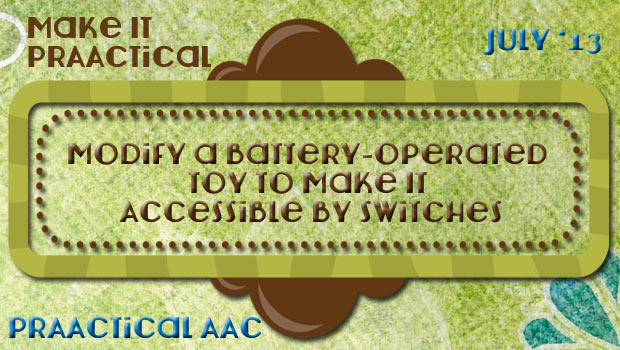
Professionals of a certain age (ahem) may remember when the only switch-accessible toys we had to work with were the ones we adapted ourselves. Now, of course, there are a wide range of battery-operated toys that are already switch-accessible and we can buy as many as the budget will allow. The problem is that most of us have pretty limited resources for purchasing these toys, and a quick search yielded adapted toys in a wide price range ($45.00-$250.00 USD). Buying regular (non-adapted) battery-operated toys and then adapting them yourself is another option. This video explains the principles. “Me?? Adapt a toy for switches?! But I’m not handy.” “That’s okay. You don’t have to be.” The easiest way is to use an inexpensive battery interrupter. You can purchase them in various sizes (e.g. AAA, AA, C, D) or make your own. You can learn more about battery interrupters and how to... [Read More...]
July 4, 2013
by Robin Parker -
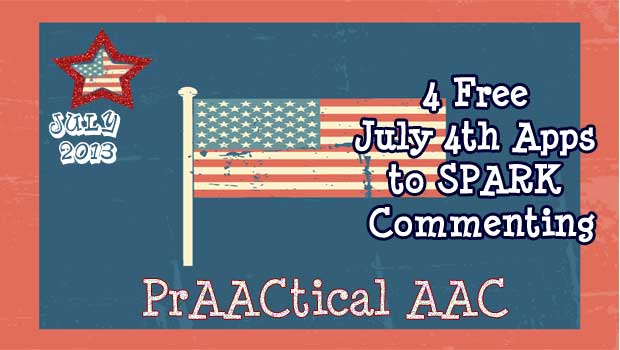
Check out these 4 free apps that can help SPARK commenting. They are great fun that will inspire commenting but can also help with core (and fringe) vocabulary as well as with being familiar with July 4th festivities. By engaging with these apps in an interactive manner, there is not the noise and confusion of the day. The apps become a good tool for familiarizing and preparing the learner for July 4th. Celebrate 4th of July, Independence Day of the United States , with sparkling fireworks (by Auryn Apps) Free – Just shake or touch the iPad and beautiful fireworks get triggered. The are really beautiful which are opportunities to comment again and again (“wow”, “beautiful”, “so cool”, “look colors”, etc.). Each firework reveals images that relate to Independence Day. This app is a gift from Auryn Apps which is a generous and dedicated developer for July 4th and throughout the year.... [Read More...]
July 3, 2013
by Robin Parker -
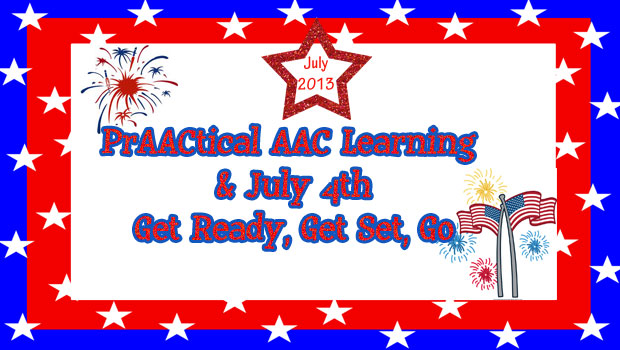
Begin the July 4th conversation now, talk about it on the 4th as it is happening, and then summarize the experience on Friday (after) with pictures, conversation, writing, and reading. We love holiday celebrations for the preparation as much as the celebration itself. It builds excitement AND gives us a chance to prAACtice core words as well as begin special activities. If you have not already started, today is a good day to introduce a social story™ especially if a learner has difficulty with loud noises (firecrackers), crowds or lots of people, new foods (picnics) or routine changes. A participation story is also helpful just to prepare learners for the celebration activities. It is also a good idea to develop meaningful language activities about July 4th today. Get some great free stories from TarHeel Reader – July 4th Books. Make art projects, play games, sing songs, prepare recipes which will help teach new... [Read More...]
June 29, 2013
by Carole Zangari -
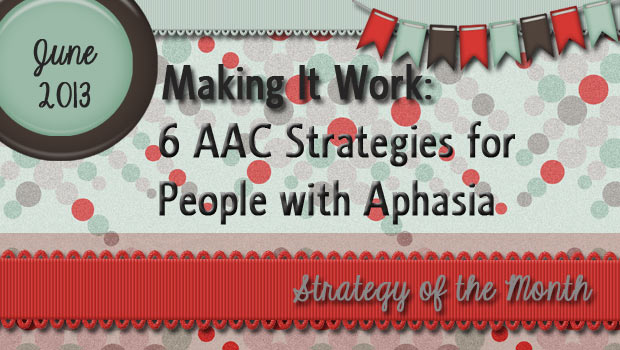
People with aphasia are often most successful when a number of different strategies are combined. In this post, we discuss a number of strategies that we can use in our therapy and teach to communication partners. Augmented Input We’ve written so many posts about aided language input that we’re almost embarrassed to bring it up again. Almost. It seems like no matter which age group or clinical population is the subject of our post, that strategy plays a central role. It is the same for people with aphasia with one exception. They benefit from a broader array of input cues, such as gestures, writing, and even pantomime. Augmented input is the term that is used to refer to oral language that is supplemented with pictures, print, gestures, pantomime, and the use of objects in the environment. By using these things as you speak, you enhance the ability of the person... [Read More...]
June 26, 2013
by Carole Zangari -
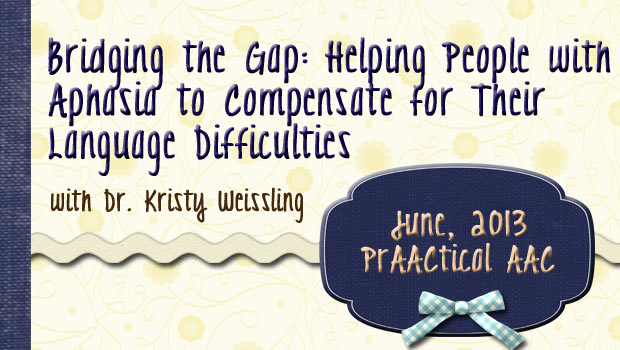
We’re wrapping up Aphasia Month with another fine post from Dr. Kristy Weissling. You can see her earlier posts here and here. In this post, Kristy shares her thoughts on how SLPs can use AAC supports to help individuals with aphasia compensate for their language difficulties. In 2010, my colleague, Carrie Prentice, and I talked about the role of both remediation and compensation in the speech rehabilitation programs of people with aphasia. At that time, we were trying to emphasize that at any particular time in the rehabilitation process, from acute care to outpatient rehabilitation, all possible alternatives should be balanced to create an individualized treatment program. Both restorative and compensatory mechanisms are available to therapist throughout this process. We proposed the work of Dixon, Garrett, and Backman (2008) to formulate a framework for discussing compensation. Six mechanisms of compensation were identified in their chapter on principles of compensation in... [Read More...]
June 22, 2013
by Robin Parker -
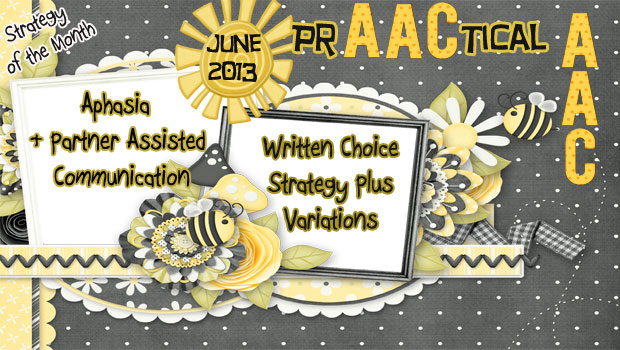
This month, we have enjoyed writing about communication strategies for aphasia. Partner supported communication is the platform for many of the effective techniques we use to help people with aphasia initiate, maintain, or terminate communication and conversation. We have talked about assessment strategies, communication books, and alphabet & topic supplementation. Now it is time to discuss the written choice strategy. The written choice strategy is fairly easy to implement, can look natural, and can result in seamless detailed conversation. Written choices are provided in the context of conversation and are displayed in an organized manner. What is It? The written choice strategy has the partner/facilitator generating written key-word choices that relate to the conversational topic. The written choices can be paired with text, pictures, drawings, symbols, and natural speech. The partner/facilitator writes possible answers to conversational questions in list form. The conversation is extended as continued written choices are offered... [Read More...]
June 21, 2013
by Carole Zangari -
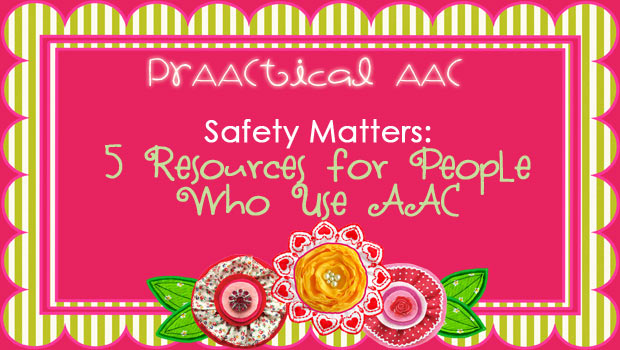
Though she was not the first of my clients with cerebral palsy who made me think long and hard about safety, Marla was the one who kept me up at night. It was the seventies, and I was a PCA when institutionalization was on the way out and community living was gaining ground. Marla lived on her own in an apartment and, for awhile when I was a college student, I visited her in the morning to get her up and at night to put her to bed. During the day, she could get around reasonably well and call for help if she needed it. But at night, after she was settled in bed, she was pretty much stuck there until someone returned in the morning. She didn’t have the physical skills to use a phone while lying down, and, if there was AT that would have helped, I... [Read More...]
June 13, 2013
by Carole Zangari -
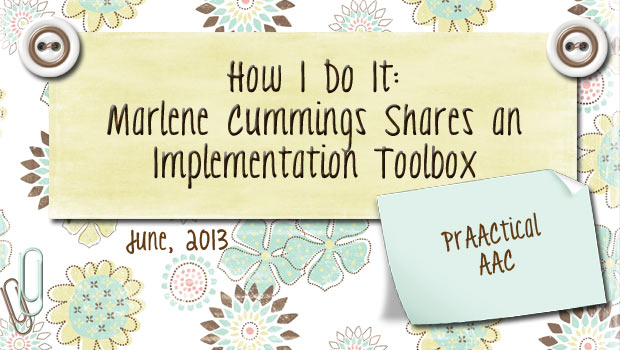
Now that the school year is winding down, some of you have a little more time to read, process, and prepare for next year. We are really excited to share more ideas from Marlene Cummings, one of the most experienced AAC SLPs that we know. Those of you who have been following Marlene’s posts on the AAC implementation will be pleased to see the next part of the Framework for Success that she developed with the AAC Team at Oakland School District. If you missed her first and second posts, go take a peek at them when you can. 5 Things in our “Implementation Toolbox” When we begin the process of implementing AAC it is important to consider our “thinking”. We always want to approach every student, every team and every classroom with as much wisdom and respect as possible. One of my colleagues, Dr. Penny Hatch, from UNC Chapel Hill... [Read More...]
June 8, 2013
by Robin Parker -
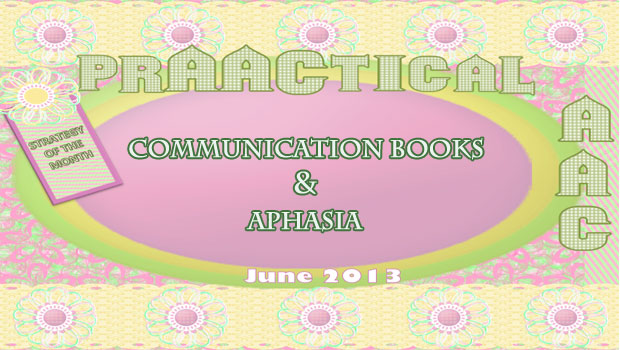
We know aphasia intervention has moved well beyond traditional speech and language training and intervention. We are so happy it has moved to an authentic participation, functional communication, and social interaction focus. Communication books are one tool for helping people with aphasia be active participants in conversation and comprehensive communication. Here are some thoughts and ideas about communication books to get started. Communication Books- Communication books for adults with aphasia can be in grid format with relevant communication messages. There can be a few pages or many, but keep in mind that the more pages, the longer it will take to navigate. It is most important to include high priority and relevant messages that will support needed communication and not just ‘standard’ messages. There are many samples and templates that can be purchased or downloaded for adult communication books. These may be good as a start, but should be individualized when... [Read More...]
June 5, 2013
by Robin Parker -
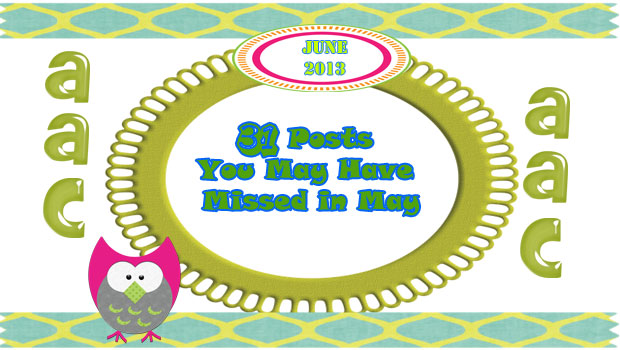
Strategy of The Month Communication Boards: Colorful Considerations Communication Boards Can Be Used For…. A Lot I Made A Communication Board: Bow What Join Together: Core & Fringe Vocabulary Fresh Look AAC in the Classroom with Joan Bruno Friendship Skills for Children Who Use AAC with Dr. Erinn Finke Top 5 Switches for People With ALS by Amy Roman AAC & Dementia with Dr. Melanie Fried Oken AAC for Children Who Have Rett Syndrome with Dr. Theresa Bartolotta AACtual TherapyHow We Do It Essential Tricks for Supporting AAC in Schools, Part 2 PrAACtical Look: AAC at Dynamic Therapy Associates by Vicki Clarke A Framework for Success Getting Started in the Exciting World of Communication & AAC with Marlene Cummings AAC Myth Buster Wrap-Up PrAActical Thinking It’s PrAACtically Better Hearing & Speech Month 30 Posts You May Have Missed for Autism Awareness Month It’s PrAACtically Mother’s Day- 5 Activities that Support... [Read More...]









